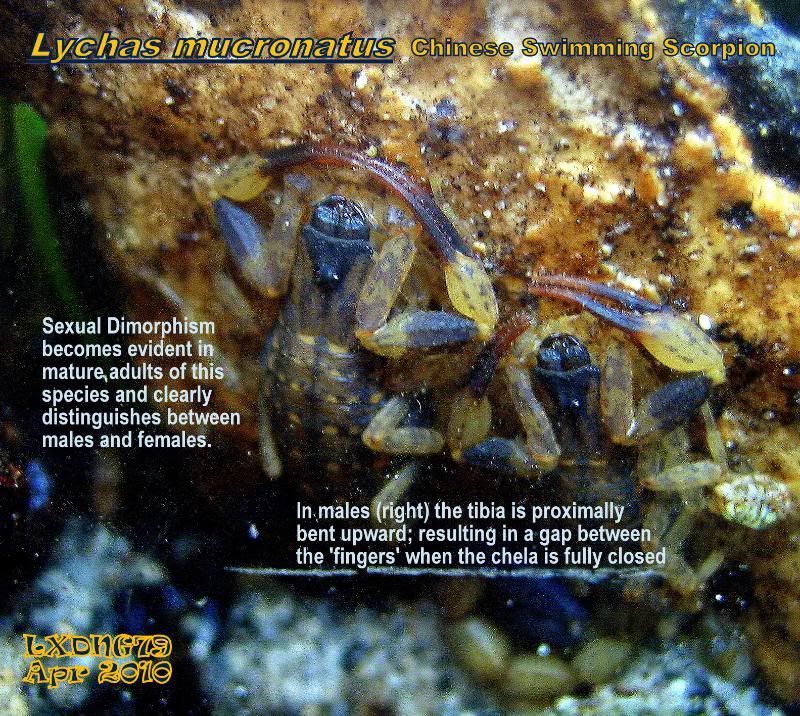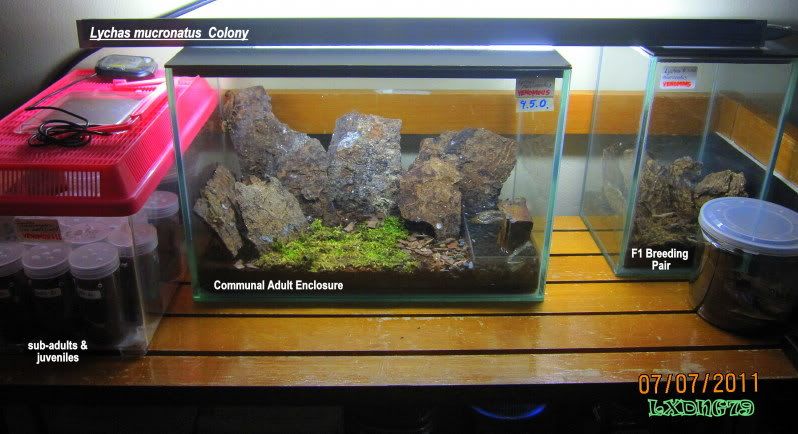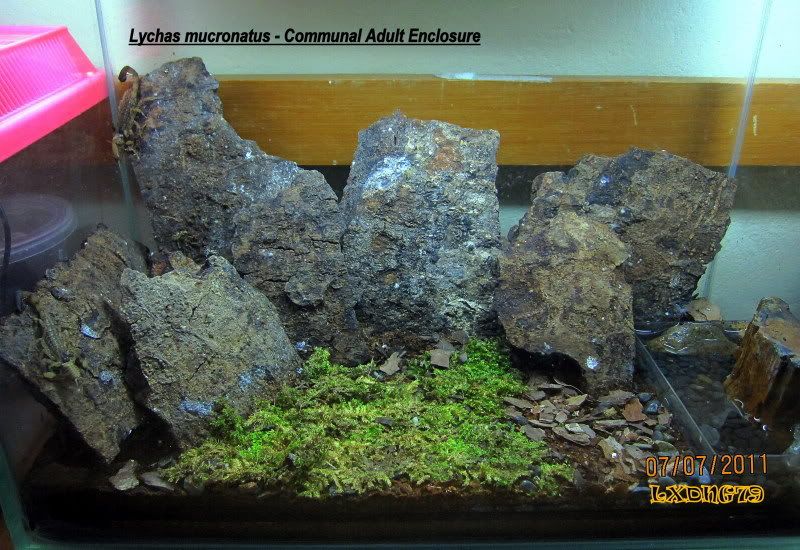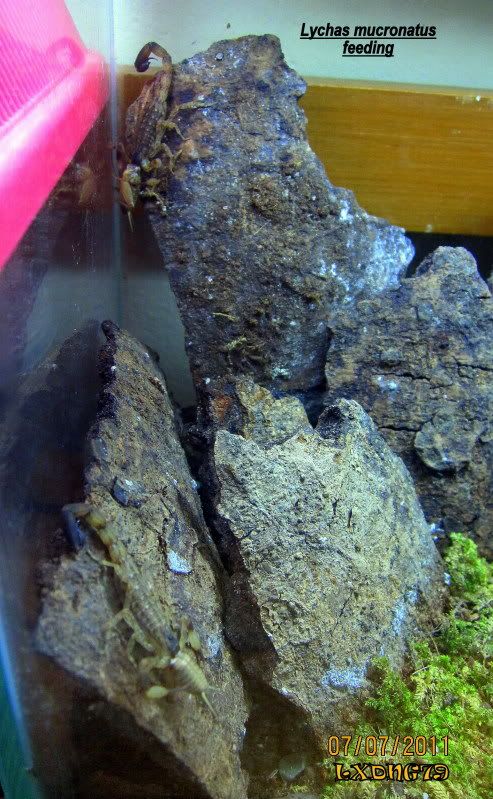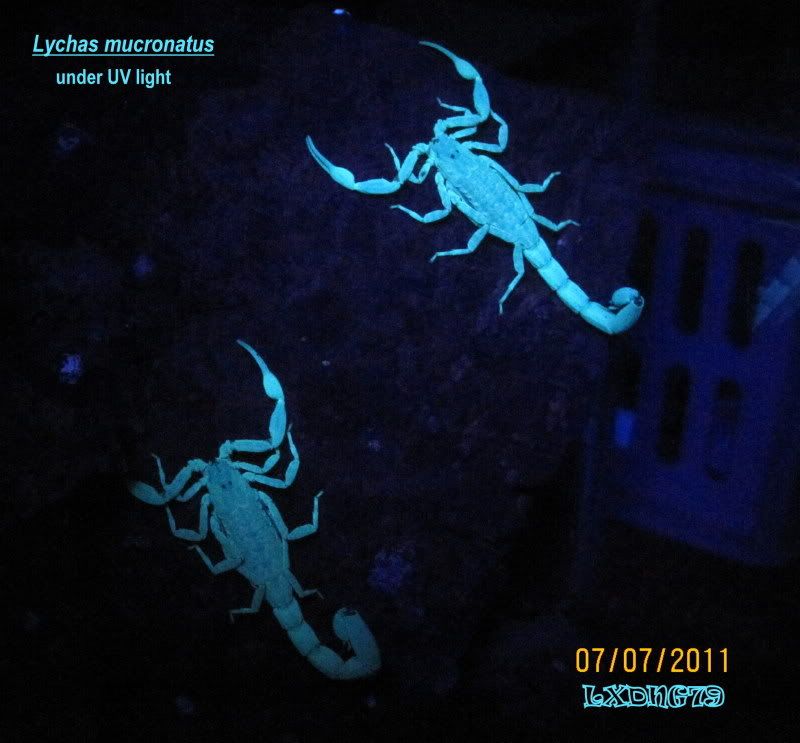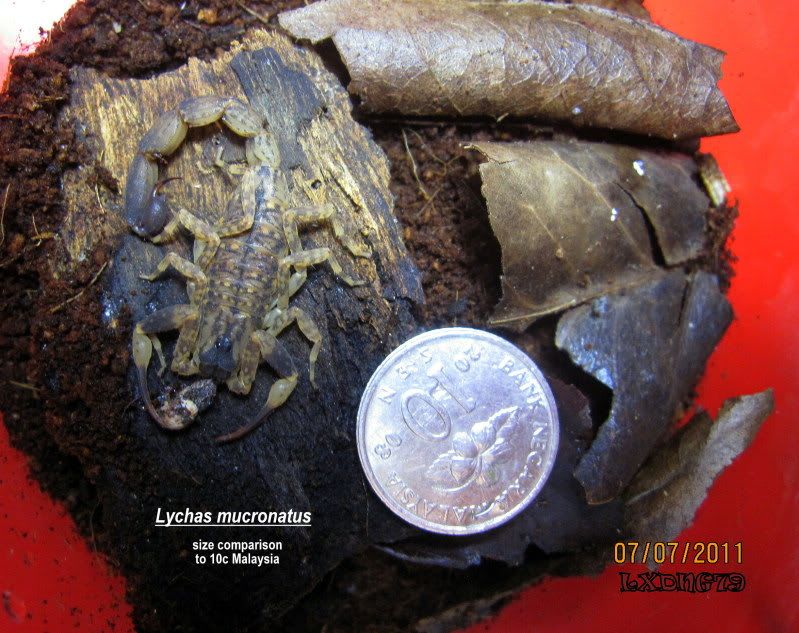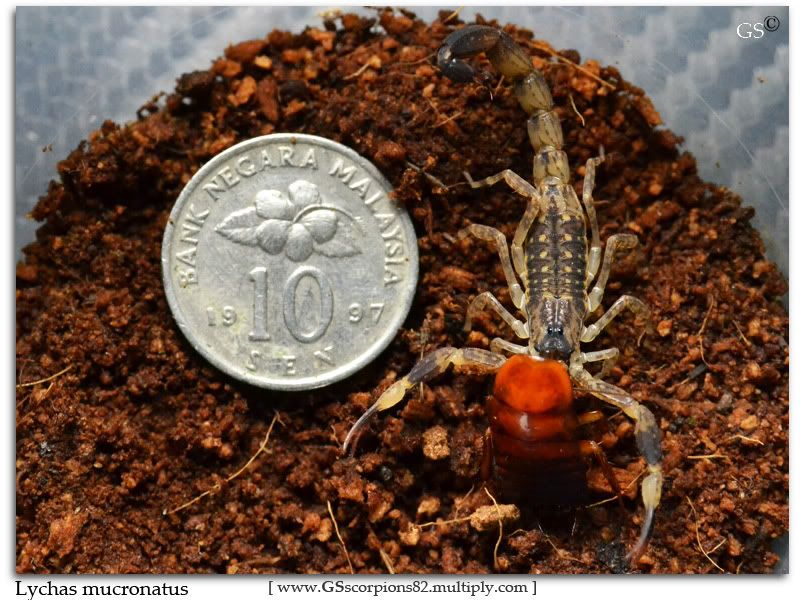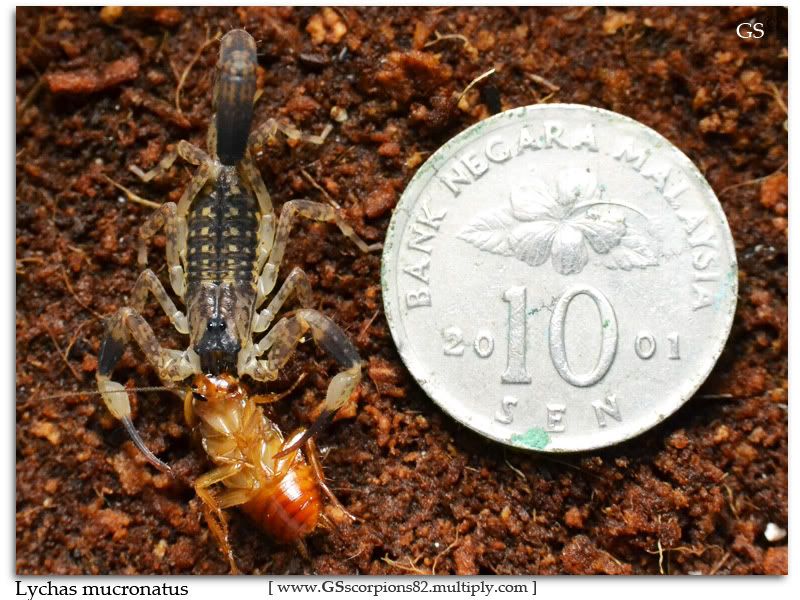Longimanus
Arachnopeon
- Joined
- Jul 14, 2007
- Messages
- 31
I've been keeping this species for quite sometime and I've been hoping to raise a reasonably good-sized colony of them for a Communal Enclosure. Of my 1st captive bred batch only one breeding pair remained.
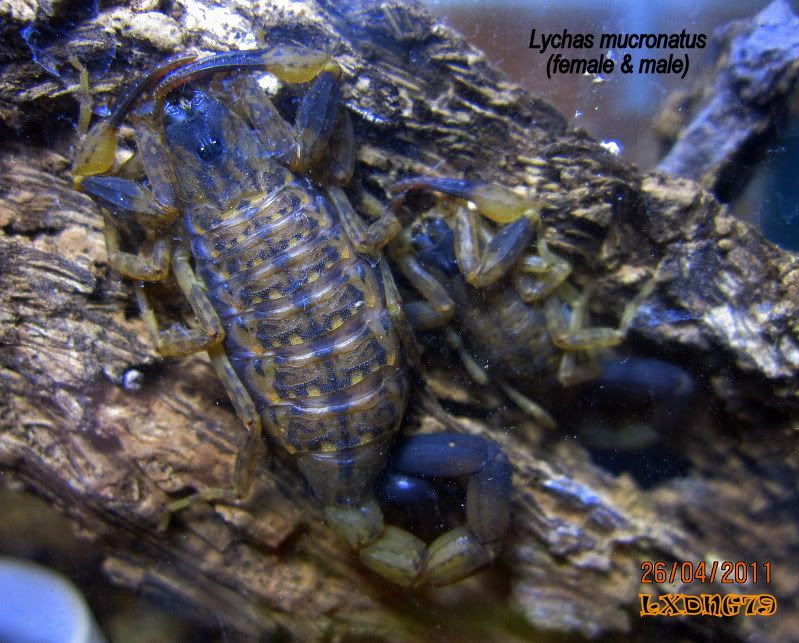

This is the enclosure they were housed in until the female eventually gave birth


The brooding female was relocated to a brooding enclosure so that the scorplings did not to disperse in the adult vivarium.
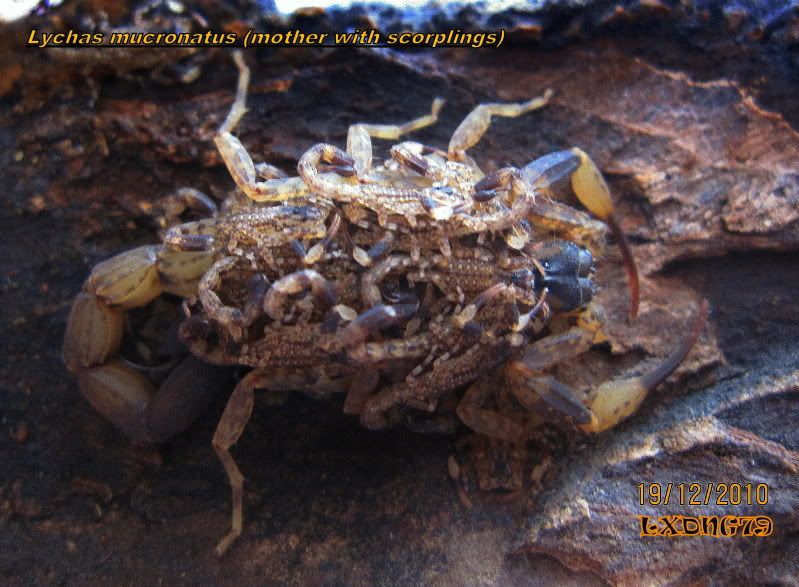
As with most bark scorpions, these had to be raised individually to avoid molt-cannibalism.
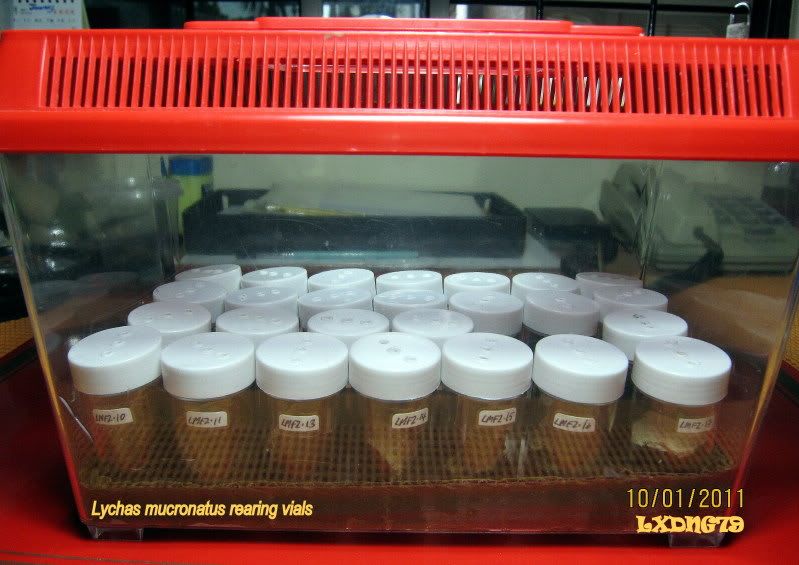
Feeding them is no small task when pinheads are difficult to acquire here.
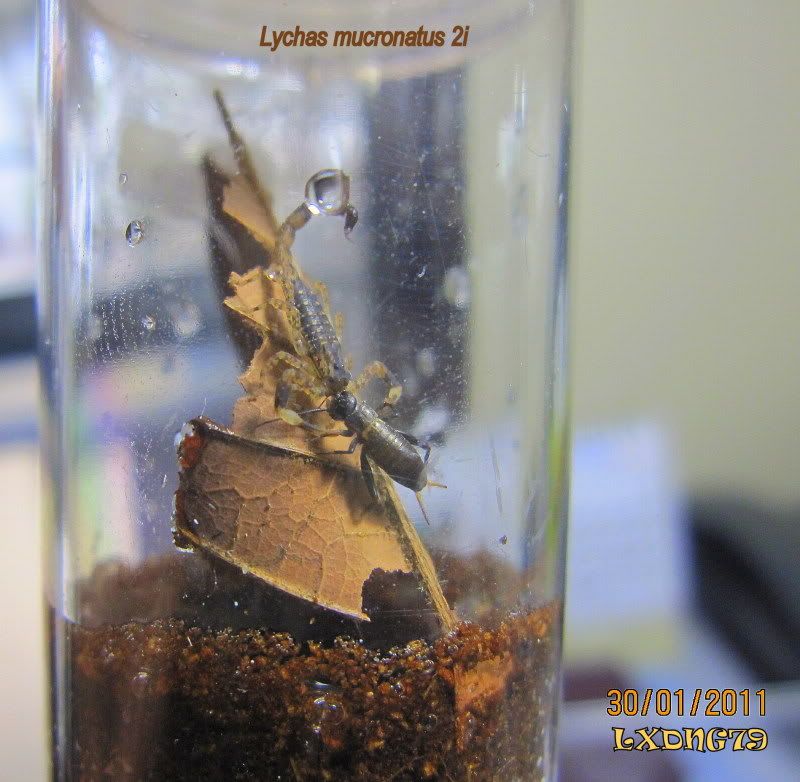
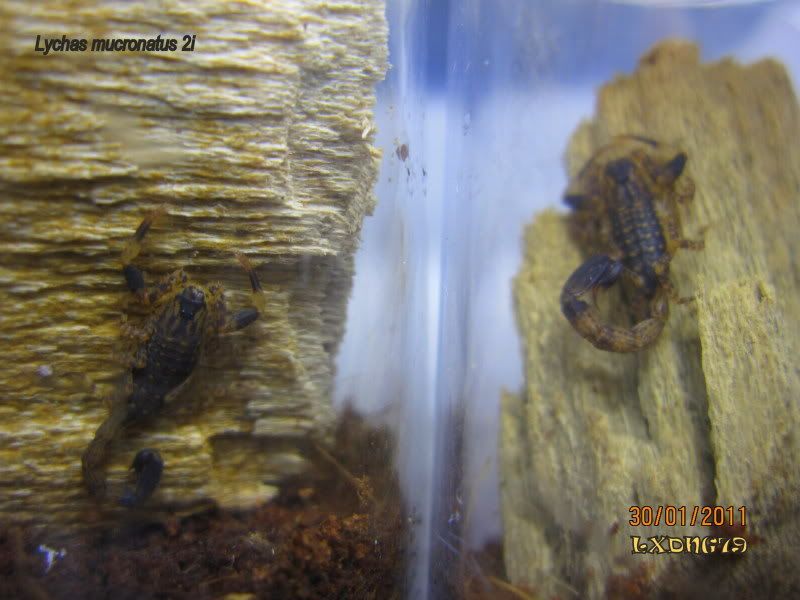
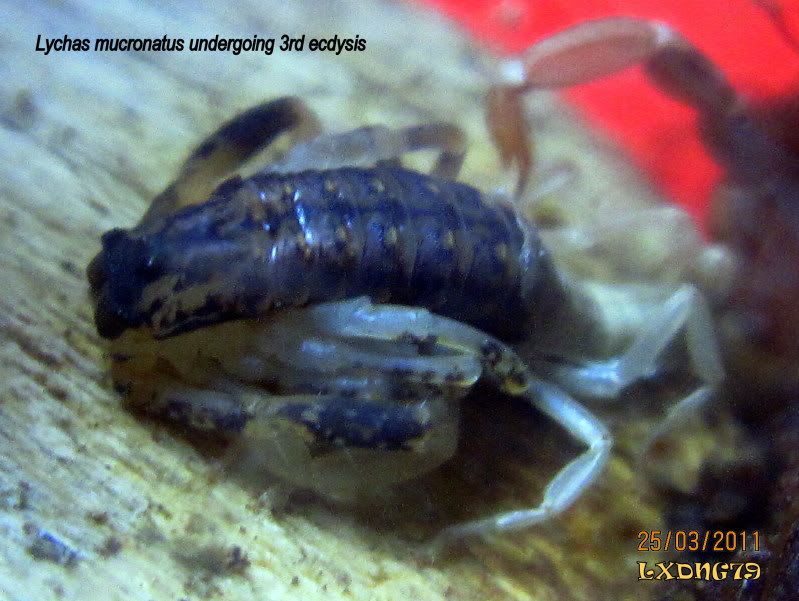
As they grew, each individual was transferred to a larger vial/deli.
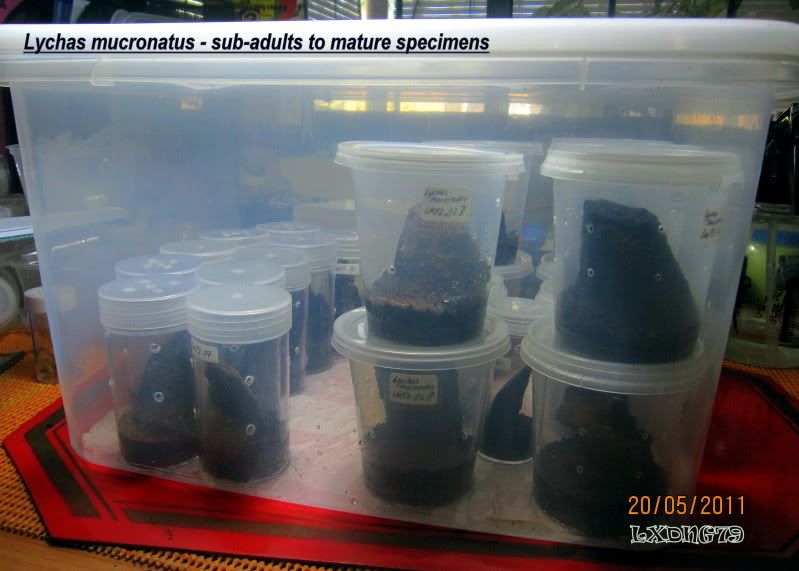
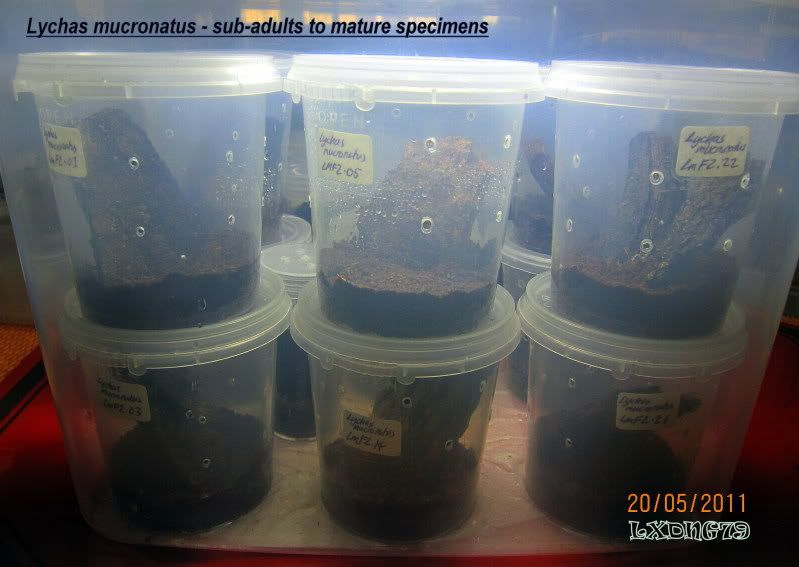
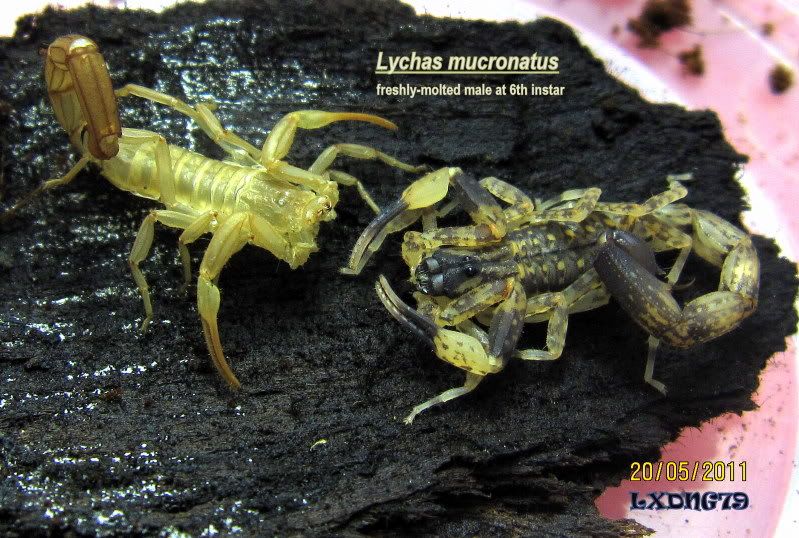
Around 170-180 days after birth the males begin to mature at 6th instar. The females took longer; reaching maturity at 7th instar rougly 190-200 days after birth.
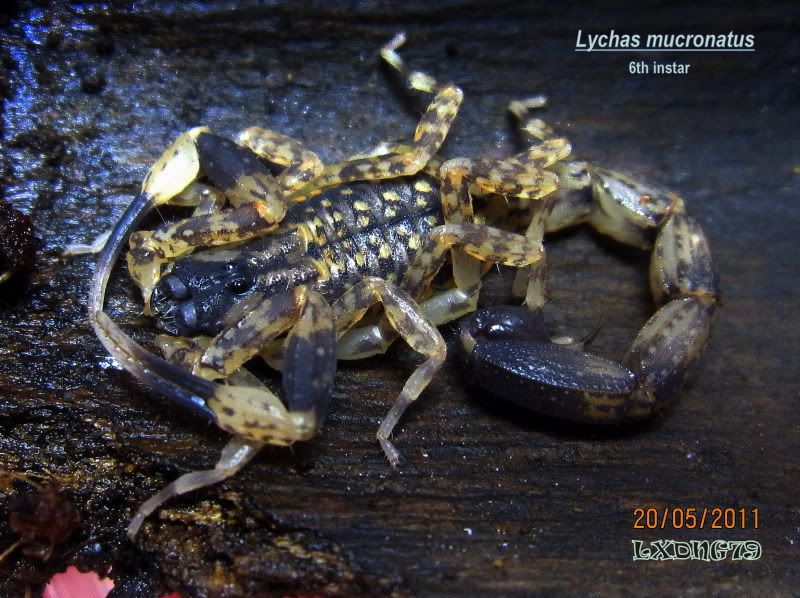
Alas I finally manage to raise a workable ratio of males and females to be inducted into this communal enclosure.
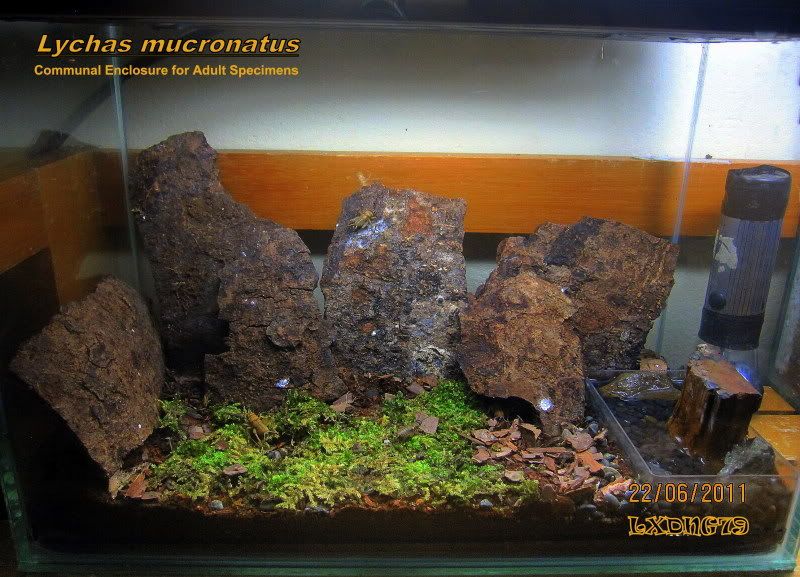
The current population of adults here is 9.5.0, though a few more have yet to mature before they are added to the colony. As adults this species is very communal, and to some extent seem to enjoy each other's company.
Cheers & Best regards


This is the enclosure they were housed in until the female eventually gave birth


The brooding female was relocated to a brooding enclosure so that the scorplings did not to disperse in the adult vivarium.

As with most bark scorpions, these had to be raised individually to avoid molt-cannibalism.

Feeding them is no small task when pinheads are difficult to acquire here.



As they grew, each individual was transferred to a larger vial/deli.



Around 170-180 days after birth the males begin to mature at 6th instar. The females took longer; reaching maturity at 7th instar rougly 190-200 days after birth.

Alas I finally manage to raise a workable ratio of males and females to be inducted into this communal enclosure.

The current population of adults here is 9.5.0, though a few more have yet to mature before they are added to the colony. As adults this species is very communal, and to some extent seem to enjoy each other's company.
Cheers & Best regards

